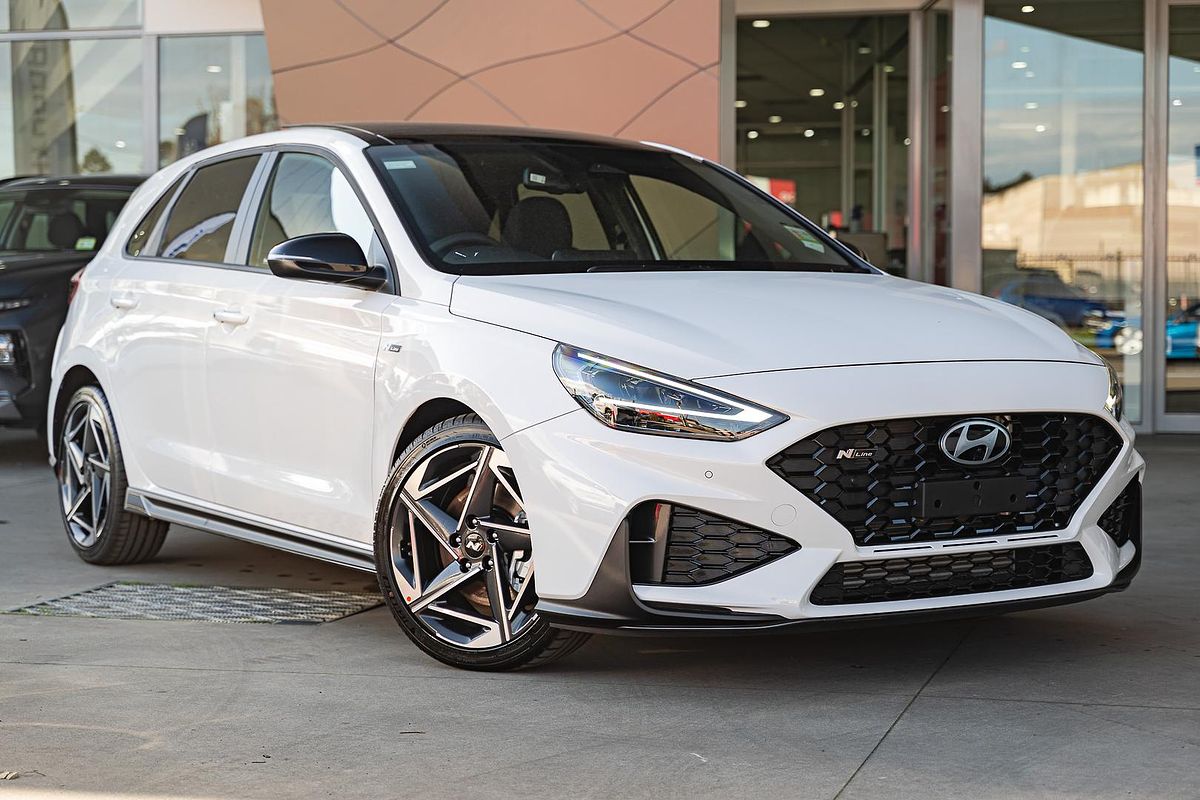Hyundai, founded in South Korea in 1967, began its automotive journey by producing the Cortina under license from Ford. It wasn’t until 1976 that the company released its first in-house design, the Pony, which was available in the UK from 1982 until 1990.
Since then, Hyundai has consistently ranked highly in reliability charts and steadily gained market share in the UK. In 2016, Hyundai introduced the Ioniq name in connection with its hybrid and electric vehicles, beginning with a hybrid hatchback designed to rival the Toyota Prius.
In recent years, the IONIQ name has evolved into more of a sub-brand, representing Hyundai’s lineup of electric and hybrid models.
Today, the IONIQ brand stands at the forefront of Hyundai’s innovation, producing some of the most distinctive and forward-thinking electric vehicles available, while the company continues to offer dependable petrol and diesel models like the i10, i20, and i30.
Hyundai’s commitment to quality is reflected in its strong performance on reliability indexes, where it often places multiple models in the top 10. Furthermore, the company has a solid reputation for honoring warranty claims.
1. 2025 Hyundai Tucson
Among Hyundai’s most reliable vehicles is the Tucson, which has been on sale since 2022 and is priced from around £32,000.
It offers excellent value, especially in the competitive SUV segment, and was ranked number two in Honest John’s 2024 reliability guide, just behind the Lexus NX. The Tucson remains available today with petrol and petrol hybrid variants, along with a wide range of configurations.
The Hyundai Tucson is a mid-size SUV that finds itself in one of the most competitive and rapidly growing segments of the market, going up against rivals like the Nissan Qashqai, Seat Ateca, and Volkswagen Tiguan. Its design appears to borrow various greatest hits from other manufacturers, combining them all into one vehicle.
At the front, the Tucson features a bold cascading grille reminiscent of the Mercedes EQC, while the front quarter panel strakes on either side seem inspired by the Bentley Flying Spur.
Around the back, the taillights take cues from multiple sources: the straked design echoes the Peugeot 3008, while the full-width light bar resembles that of a Seat Leon. For some, this mash-up of elements might make the Tucson’s exterior feel disjointed or visually overwhelming.
Thankfully, the interior makes a much better impression. It feels significantly more upscale than the previous generation, largely due to the widespread use of soft-touch and high-quality materials. Finding a comfortable driving position is simple, thanks to ample adjustability in both the seat and the steering wheel.
A major update to the cabin is the 10.3-inch infotainment screen, positioned prominently in the center console. It’s crisp and vibrant, though users might notice some sluggishness in responsiveness.
Thankfully, Android Auto and Apple CarPlay are included as standard across the entire lineup, giving users the option to seamlessly mirror their smartphones.
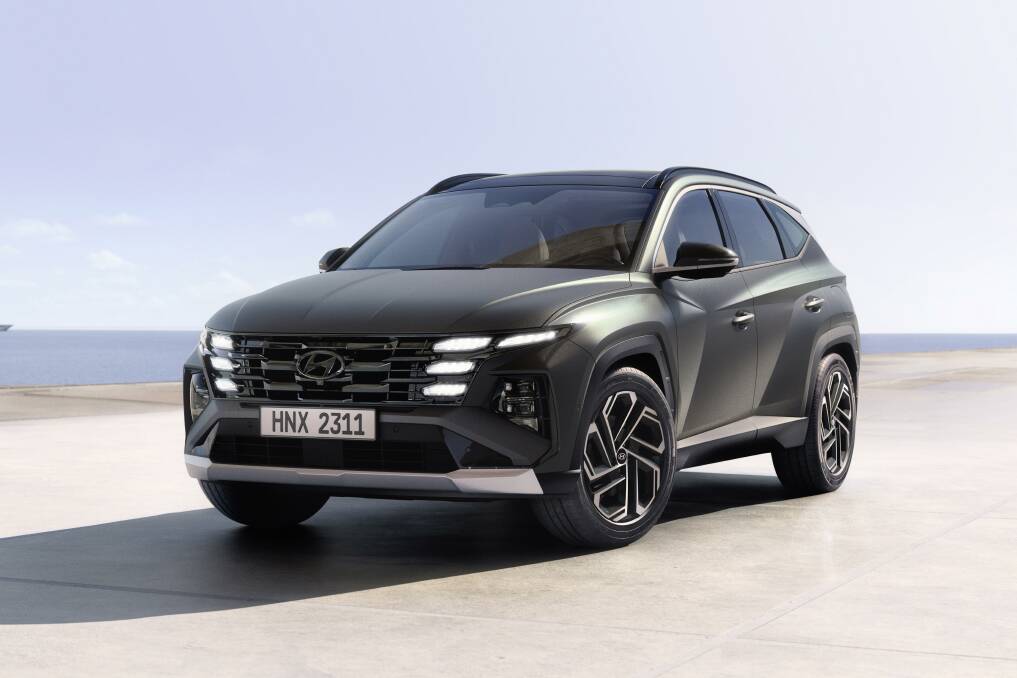
Another standard feature in all trims of the Hyundai Tucson is the digital driver’s display, which replaces traditional dials and gauges with a sleek digital screen. Not only does it look sharp, but it also offers numerous customization options.
Rear passenger space is generous in the Tucson, offering solid legroom and excellent headroom—even when the optional panoramic glass sunroof is equipped.
However, the rear seats themselves have a slightly awkward dip, which can make it harder to fully stretch out your legs. Additionally, the side bolsters can press into your thighs, and accessing the ISOFIX mounting points for child seats can be unnecessarily tricky.
One area where the Hyundai Tucson truly excels is in boot capacity. Both the standard petrol model and the hybrid variant offer an impressive 620 litres of cargo space—enough to fit around seven carry-on suitcases.
This figure edges out the Volkswagen Tiguan, which has 615 litres of capacity, and easily outclasses the Skoda Karoq’s 521-litre offering. That said, be aware that the mild-hybrid Tucson sacrifices some space due to its battery placement, bringing the total down to 577 litres.
Also Read: 10 Vehicles With Best Long-Term Fuel Economy That Save You Money Year After Year
2. 2022 Hyundai IONIQ
Another standout is the Hyundai IONIQ, which marked the brand’s entry into the hybrid and EV market. Produced from 2016 to 2022, the IONIQ underwent significant styling changes throughout its production run before being discontinued due to shifting consumer preferences toward SUVs and crossovers.
Though no longer in production, the IONIQ still represents strong value on the used car market, with low-mileage 2023-registered models being listed for under £12,000.
The Ioniq 6 is built on the same platform as the Ioniq 5 SUV and shares many of its powertrain options. The base version produces 149 horsepower with a single electric motor powering the rear wheels.
When equipped with the Long-Range battery, the single-motor variant sees a power boost to 225 horsepower. For those seeking more performance and traction, the dual-motor configuration delivers 320 horsepower and all-wheel drive, thanks to electric motors on both the front and rear axles.
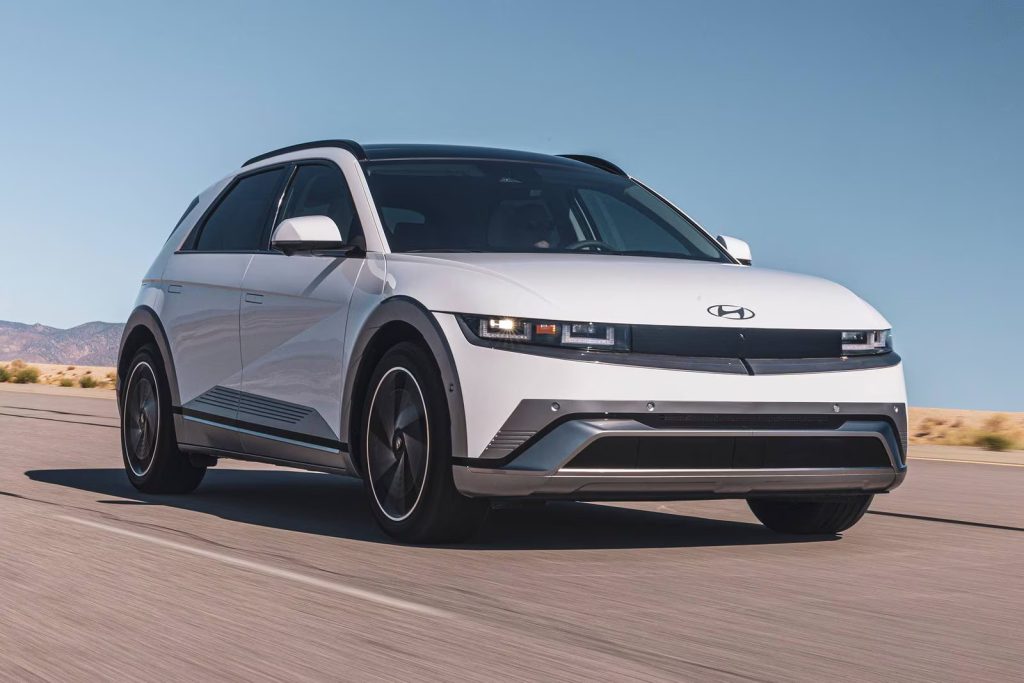
This setup is only available with the larger battery. While the Ioniq 6 delivers a smooth, quiet ride with a well-insulated cabin, it doesn’t compromise on handling.
Its low center of gravity gives it a confident, planted feel through corners, and drivers can adjust regenerative braking levels on the fly using the steering-wheel paddles.
In terms of performance, the RWD Long Range model managed a 0–60 mph time of 6.2 seconds in testing, while the AWD Long Range version achieved the sprint in a much quicker 4.3 seconds.
The Ioniq 6 also delivers strong results when it comes to range. The EPA estimates that the 2025 Ioniq 6 RWD with the larger battery can reach up to 342 miles on a full charge. The SEL RWD version is rated for 291 miles, while the base RWD model still delivers a respectable 240 miles.
In real-world highway testing at 75 mph, the large battery RWD model reached 260 miles—falling 82 miles short of its EPA estimate. Meanwhile, the AWD version came closer to its EPA rating, achieving a 75-mph highway range of 220 miles.
3. 2020 Hyundai i10
The Hyundai i10 produced between 2014 and 2020 stands out not only for its excellent value and smart design but also for its reputation as one of the most reliable small cars available.
The second-generation model, manufactured from 2013 to 2019, achieved an impressive 98.6% reliability score in the small car category. This recognition reinforces its credibility as a solid choice in the used car market.
Even so, the current-generation Hyundai i10 continues to enjoy a reputation for reliability. With an on-the-road price just north of £16,000, it remains an affordable option that delivers dependable performance without straining your budget.
The Hyundai i10 stands out as a compelling option in the rapidly shrinking city car segment, especially at a time when drivers are looking to lower their running costs in busy, traffic-filled urban areas.
Despite its compact dimensions, the i10 is a breeze to drive around town thanks to its light steering, tight turning circle, and overall nimbleness.
Don’t let its size fool you, though—the i10’s cabin is surprisingly roomy and comes equipped with a generous amount of technology. You’ll find wireless smartphone connectivity alongside a suite of useful safety features.
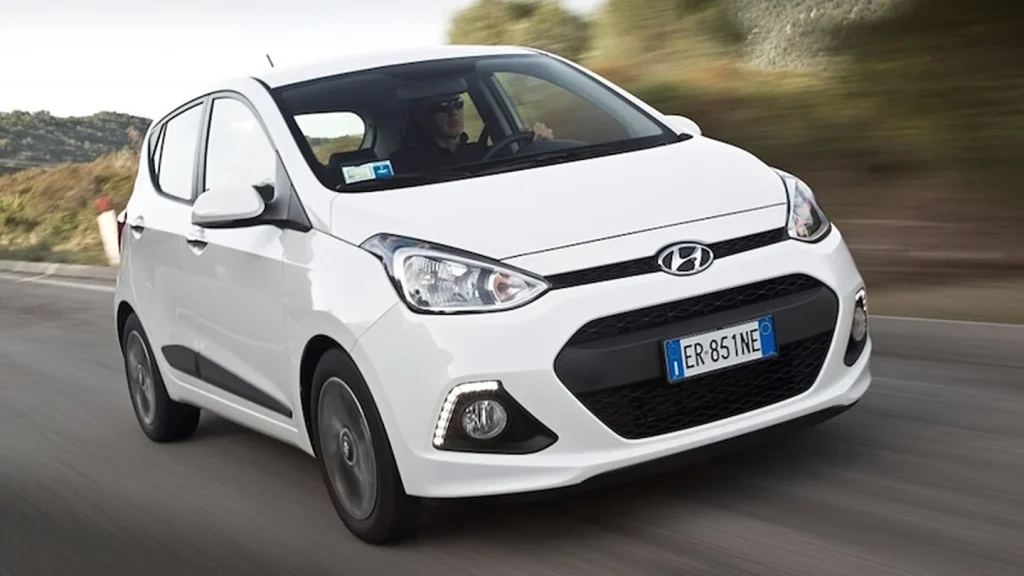
The standard petrol engines in the regular i10 are impressively fuel-efficient, and for those wanting a bit more excitement, the i10 N Line delivers a sportier driving experience with added performance flair.
In an era where many manufacturers are phasing out their city cars—models like the Toyota Aygo, Citroen C1, Peugeot 108, Skoda Citigo, Volkswagen up!, and Ford Ka have all exited the scene—Hyundai continues to support this category. The i10 remains a vibrant offering in the segment, receiving a 2023 facelift that included updated styling and improved equipment levels.
While competition in this class has thinned, the i10 still has to contend with rivals like the Toyota Aygo X, Suzuki Ignis, and its sibling, the Kia Picanto. Additionally, the Dacia Sandero and Citroen C3 superminis pose a threat, offering larger interiors at comparable prices.
The i10’s engine lineup includes three petrol options, with no hybrid, diesel, or electric variants in the mix. The range starts with a 1.0-litre, three-cylinder engine producing 66bhp, followed by a 1.2-litre four-cylinder engine rated at 83bhp.
Topping the range is the sporty 1.0-litre turbocharged three-cylinder engine that delivers 99bhp, available exclusively in the N Line variant.
All models come with a five-speed manual gearbox as standard, though the 66bhp and 83bhp versions are also offered with an automated manual transmission—though we don’t recommend this option, for reasons discussed elsewhere.
Trim levels are simple, with just three choices: Advance, Premium, and N Line. Standard equipment includes 15-inch alloy wheels, an eight-inch touchscreen with wireless Apple CarPlay and Android Auto, Bluetooth, a leather-wrapped multifunction steering wheel, a 4.2-inch digital instrument display, keyless entry, rear parking sensors, and a reversing camera.
Safety is also well covered with features like collision avoidance assist, pedestrian detection, speed limit assist, lane keeping and following assist.
Higher-spec models benefit from upgrades such as a wireless charging pad, heated front seats and steering wheel, 16-inch alloy wheels, LED interior lighting, and electrically folding door mirrors.
Premium trims introduce tartan upholstery and purple stitching, while N Line models boast a more aggressive exterior styling kit, red interior accents, brushed metal pedals, and specially designed seats.
Starting at just over £15,000, the Hyundai i10 remains one of the most affordable new cars available in the UK, undercutting the Toyota Aygo X by a few hundred pounds. However, it still falls short of beating the base Dacia Sandero, which starts at under £14,000.
4. 2008 Hyundai Coupe
The Hyundai Coupe, known as the Tiburon outside Europe, marked the brand’s initial entry into the world of 2-door sports coupes. While it never gained the same popularity as its main competitor, the Toyota Celica, it still earned praise for its handling and affordability.
The Coupe offered a choice of three engines, with most buyers opting for the mid-range 2.0 petrol variant. A 2.7 V6 engine was also available, which had an appealing sound but didn’t quite meet performance expectations.
Despite its performance shortcomings, the V6 model can still be found at very low prices, with many listed online for under £2,000.
The Hyundai Coupe offers a selection of three engines: a 1.6-litre, a 2.0-litre, and a 2.7-litre V6. Since even the top-spec V6 model is affordably priced, that’s the version we tested. It starts with a satisfying growl and feels responsive at low speeds.
Unfortunately, that’s where the praise ends. The problem lies not so much with the engine itself but with the outdated optional four-speed automatic gearbox, which drains power and eliminates any chance of achieving real performance.
From a standstill, acceleration is acceptable, but once you’re moving, making the transmission kick down is a clunky, unrefined process. While the engine becomes more polished at moderate speeds, it turns noisy under heavy acceleration, and the 162bhp output ultimately underwhelms.
The 2.0-litre option, although rougher, might be a better bet—it’s not much slower and significantly cheaper. That’s certainly a better alternative than the sluggish 1.6, which feels completely mismatched with the car’s sporty exterior.

On the road, the Coupe performs best at a steady cruise, but it isn’t well-suited to twisty backroads. Road noise from the tyres and wind noise from the tailgate area intrude, and it doesn’t handle potholes well either—bumpy surfaces cause the suspension to jolt uncomfortably.
Although the steering feels nicely weighted, it lacks proper feedback, and the more you push the car, the more its shortcomings reveal themselves. The Coupe struggles with stability in corners, and initial turn-in feels vague. Ultimately, despite its sporty styling, the driving experience is a letdown.
Even though the Hyundai Coupe was first introduced in 2002, it still holds up well in terms of looks. Now in its third generation—marked by the ‘III’ badging—the Korean model retains the sleek, sporty silhouette that originally made it a hit.
Designed in-house, the Coupe has benefited from a facelift that added a revised front end, new grille, and updated headlights. The original side vents have been replaced by smaller units that now house the side indicator repeaters. This change gives the car a cleaner appearance, though it loses a bit of that sporty flair.
In terms of competitors, the Coupe doesn’t face much direct rivalry these days, as former adversaries like the Ford Puma and Toyota Celica are no longer around. Instead, it must compete with performance hatchbacks like the SEAT Leon FR and Ford Focus ST, as well as coupe-convertibles such as the Vauxhall Astra TwinTop and Peugeot 207 CC.
As part of the transition to the SIII model, Hyundai updated the interior as well. The centre console was redesigned with a more logical layout and features a contemporary metal-effect finish.
However, the experience is let down by a subpar stereo, and while the blue backlighting on the dials is visually appealing, it’s inconsistent across the cabin. The auxiliary dials on the centre console also look rather cheap. A more practical touch is the inclusion of an MP3 connector in the centre armrest, which comes standard on all versions.
Unfortunately, the driving position leaves a lot to be desired. Taller drivers will struggle, as the low roof restricts headroom, forcing you into a sunken seating position. The seat’s vertical adjustment is minimal, and since the steering wheel doesn’t offer reach adjustment, it can feel too far away.
Rear space is fairly generous for a coupe, and the boot offers good capacity, especially when the rear seats are folded flat. Still, the Coupe lags behind more practical hatchbacks in terms of everyday usability. Running costs are also a downside.
The V6 engine is particularly thirsty, especially when paired with the automatic transmission, and it retains over 4% less of its original value than the base 1.6-litre. To top it off, servicing isn’t exactly cheap either.
5. 2025 Hyundai i30N
The Hyundai i30N, on the other hand, is a more recent performance-oriented offering, directly competing with the likes of the Volkswagen Golf R and Honda Civic Type R.
It follows a similar formula with a compact hatchback and a significant power output, available in either 250 or 280 horsepower versions. Weighing in at just around 1,300kg, the i30N can accelerate from 0 to 60mph in just 5.4 seconds.
However, despite strong sales figures, Hyundai has announced that the i30N will no longer be offered after 2024. The good news for enthusiasts, though, is that there is no shortage of used models available, with 2018 versions often selling for under £15,000.
The Hyundai i30 N is the hot hatch equivalent of Korean fried chicken — a bold reinterpretation of a familiar classic, served up by a brand you might not have expected. It’s clear from the first glance that this isn’t your average Hyundai i30.
The N version boasts an aggressive body kit, red accent striping, lightweight 19-inch alloy wheels, and a substantial twin-exit exhaust system, all underscoring its sporty, boy-racer character.
Inside, the performance upgrades are more subtle. At first, you might only notice the addition of sports seats, a redesigned steering wheel, and blue contrast stitching.
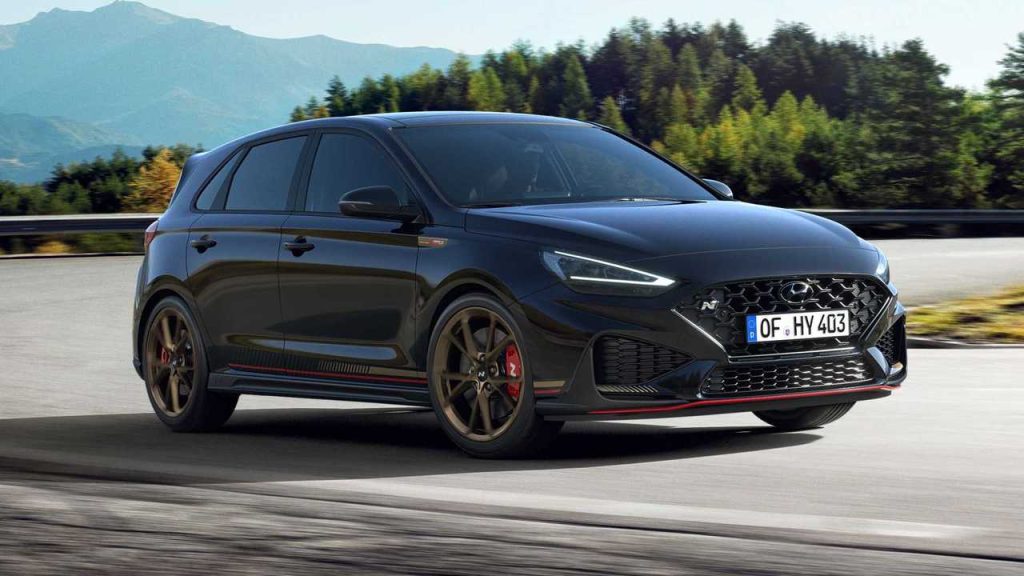
However, once you fire up the engine, the real transformation becomes evident. The instrument cluster lights up with shift indicators and an N logo, while the exhaust emits a deep, purposeful growl that sets the tone for a much more focused driving experience.
Dominating the dashboard is a 10.0-inch infotainment screen that serves more than just entertainment duties. It includes the exclusive ‘N Mode’ — a feature tailored for enthusiasts who want detailed performance data.
Within it, you’ll find a lap timer, G-force meter, and various adjustable settings that allow you to personalise your drive mode to suit your style, whether you’re on the road or the track.
Also Read: 6 Reliable City Cars and 6 That Aren’t Made for Stop-and-Go
Hyundai Cars To Avoid
Hyundai is a brand that tends to fly under the radar for many people when it comes to buying a car. While not the largest manufacturer out there, they have managed to produce some truly impressive vehicles.
More often than not, Hyundai’s cars are not only affordable but also highly reliable, offer great economic value, and stand out for their excellent safety features.
It’s surprising to me that more people don’t consider a Hyundai vehicle. That said, not every model they’ve released has been a success. There have certainly been some disappointing cars along the way.
In this article, we’ll look at five of the worst Hyundai models ever produced—cars that, in our opinion, should be avoided at all costs. On top of that, we’ve also compiled a list of ten Hyundai models that are absolutely worth your money. These vehicles represent some of the best that the company has created in recent years.
1. 2016 Hyundai Tucson
The Hyundai Tucson has generally been a solid vehicle, but it started facing significant issues around 2015 and 2016. These problems were mostly linked to the transmission and air conditioning system, which led to over 200 complaints from owners. Even the latest model of the Tucson has occasionally received similar feedback.
At the front, the Hyundai Tucson features an imposing grille flanked by sharply-shaped headlights and a sweeping roofline that contribute to its sleek, modern styling.
The dark wheel arches and body-colored bumpers provide the rugged visual cues expected of an SUV. Alloy wheels come standard across the entire range, and the ‘Executive’ trim we tested stands out with its 17-inch alloys and a vibrant blue paint finish that adds a touch of flair.
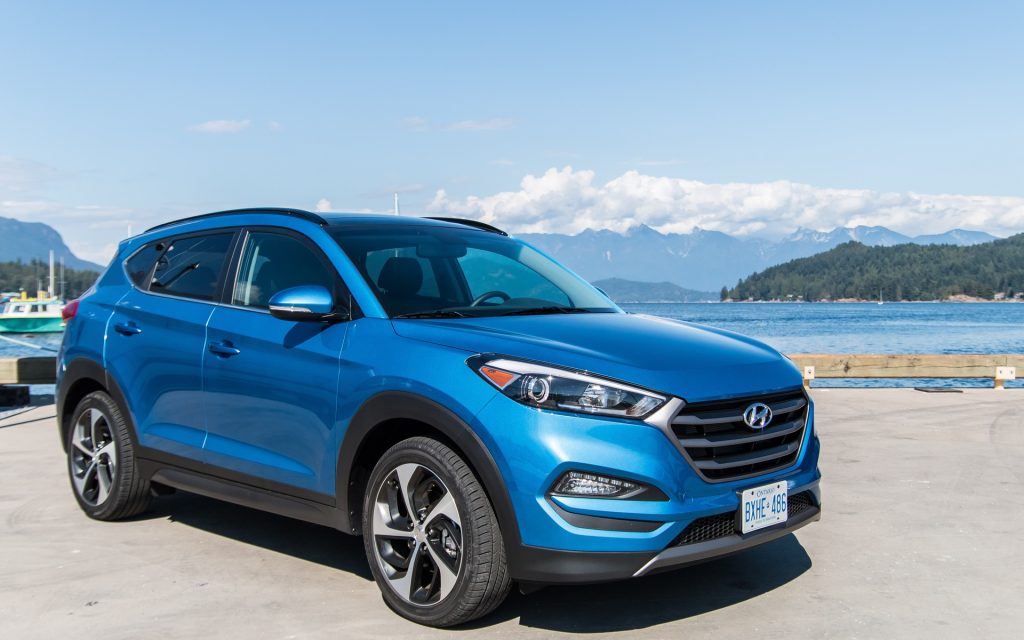
Inside, the Tucson delivers a true SUV experience, giving the driver a commanding view of the road. The interior is well-crafted, with quality materials used throughout and a dashboard that’s both cleanly laid out and user-friendly. Higher-spec models benefit from a touchscreen infotainment system, adding to the premium feel.
The seats are supportive and comfortable, aided by a steering wheel and driver’s seat that can be adjusted to suit a range of driving positions.
The Tucson is a practical choice for families, thanks to its wide-opening rear doors and a generously sized boot. Two-wheel-drive variants offer 513 litres of cargo space, while the four-wheel-drive version we tested offers a slightly smaller, but still useful, 488 litres due to its drivetrain configuration.
2. 2017 Hyundai Santa Fe
The Santa Fe is one of Hyundai’s most popular and recognizable models, still being produced today. However, not all versions have been trouble-free.
The 2017 model, in particular, faced numerous issues that were hard to overlook. The transmission system was notably unreliable, with frequent hesitations and other performance concerns plaguing the vehicle.
The Santa Fe is powered by a single engine option — a 2.2-litre diesel producing 194bhp — which delivers ample performance for tackling steep inclines and hauling heavy loads, sometimes both at once, all while maintaining respectable fuel economy.
Every Santa Fe model comes equipped with four-wheel drive as standard and features a six-speed manual gearbox, although the optional automatic transmission is more widely chosen — and with good reason, in our view. The automatic enhances overall ease of use and complements the Santa Fe’s driving character well.
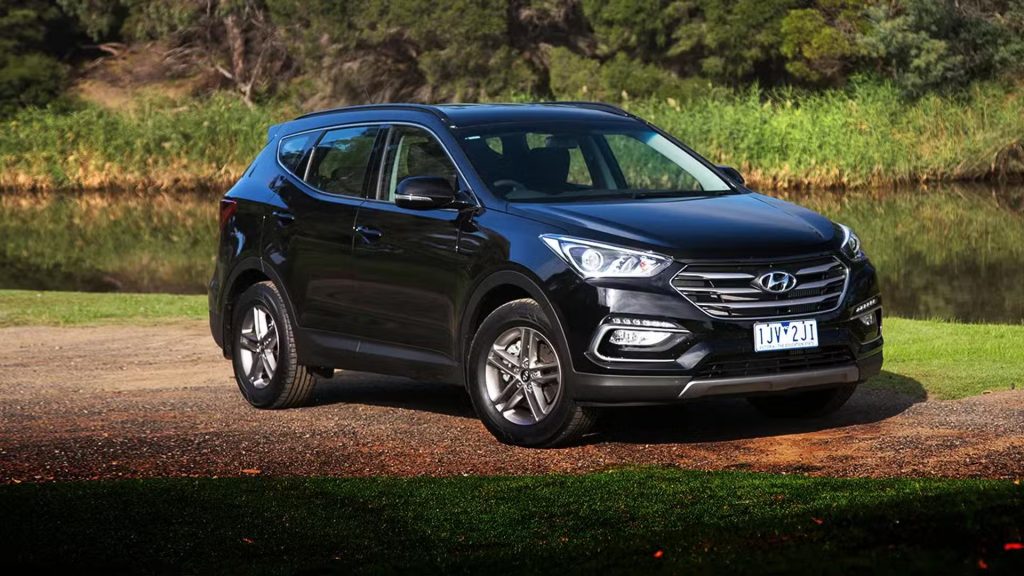
For those who tow regularly, the Santa Fe proves to be a capable companion. It boasts a maximum towing capacity of 2.5 tonnes with the manual gearbox and 2.0 tonnes with the automatic, making it a solid choice for pulling trailers or caravans.
Moving to the interior and practicality, the cabin of the Santa Fe is robustly built, featuring good-quality materials and switches that offer a pleasing, damped feel. The driving position is highly adjustable, visibility is strong in all directions, and the dashboard layout is both intuitive and user-friendly.
However, the standout feature of the Santa Fe is its spaciousness. The front row offers generous room for both driver and passenger, while the second row can accommodate three adults comfortably for shorter trips.
The two seats in the third row are well-suited for children and still provide acceptable comfort for adults on brief journeys. Both the second and third row seats fold down nearly flat, opening up a large, versatile load space. The boot’s wide opening further adds to the practicality, making it easier to load and unload bulkier items.
3. 2013 Hyundai Elantra
If you’re in the market for a used Hyundai, the Elantra is generally a solid choice. However, the 2013 model year is one you should definitely steer clear of.
This particular version ended up with the second-highest number of complaints among all Hyundai models. A strange ticking noise often came from the engine, which in many cases developed into serious engine failures.
In the competitive small sedan market, Hyundai’s latest Elantra stands out as a top pick, especially for those seeking a blend of striking design, impressive fuel efficiency, and everyday practicality. Hyundai has now expanded the Elantra lineup’s appeal by introducing the 2013 Elantra GT, which brings additional versatility to the mix.
While Hyundai has previously offered hatchback versions of the Elantra — most recently the more wagon-like Elantra Touring — the new GT steps in as its replacement. Although it doesn’t provide quite as much cargo capacity as the Touring, it still offers a generous 51 cubic feet of space with the rear seats folded flat. That’s better than what most rival hatchbacks deliver.

Even with the rear seats upright, the Elantra GT offers ample storage, and the wide hatchback opening makes loading and unloading easy. From a mechanical standpoint, the 2013 Elantra GT closely mirrors the Elantra sedan, as well as the newly introduced Elantra Coupe.
Under the hood lies Hyundai’s smooth and quiet 1.8-liter four-cylinder engine, paired with a choice of either a six-speed manual or a six-speed automatic transmission. The GT shares a similar suspension setup, though it has been retuned to deliver sharper, more agile handling.
The Elantra GT also introduces a few unique touches. Notably, it debuts a Hyundai-first feature: driver-selectable steering settings for its electric-assist power steering — a function exclusive to the GT in the Elantra lineup.
Additionally, it includes a driver knee airbag and a revised interior layout with more logically positioned air vents, offering both increased safety and convenience.
4. 2011 Hyundai Sonata
The 2011 Sonata is yet another Hyundai vehicle that was plagued by a range of significant issues. It’s widely regarded as one of the worst cars the brand has put out.
Just like the Elantra, this model suffered from persistent engine problems, and over 2,700 complaints were lodged against it. This firmly establishes its reputation as one of Hyundai’s biggest missteps.
Hyundai has crafted eye-catching designs with sheet metal and plastic that seem to have never occurred to Honda or Toyota, capturing a lot of attention in the process. But with the brand’s bold moves always comes the big question: is the quality up to par with the long-established competition?
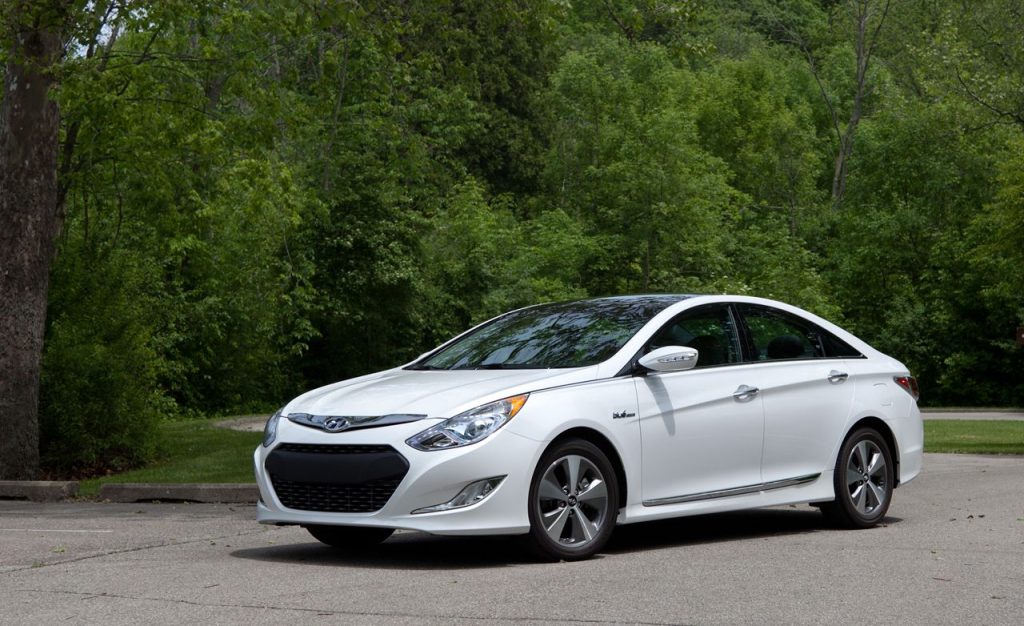
We took delivery of a 2011 Sonata, hoping it would be as reliable as our previous long-term Sonata, a 2006 model that completed a 40,000-mile run without any unscheduled visits to the service department.
Those were some big shoes to fill, and the sleeker, more stylish 2011 version didn’t quite live up to expectations. A few ongoing issues, particularly a persistent front-wheel alignment problem, plagued our $24,865 Venetian Red SE.
These concerns sent the Sonata back to the dealership multiple times, but the problems were never fully resolved. In its redesign, Hyundai broke with industry tradition by opting not to offer a V-6 as the upgrade engine.
Instead, they provided two four-cylinder engine options, including a 2.0-liter, 274-hp direct-injected aluminum-block four-cylinder with a twin-scroll turbo.
5. 2015 Hyundai Genesis
Today’s Genesis models are among the best that Hyundai has to offer. Unfortunately, the 2015 version didn’t meet that same standard. If you’re considering buying one, it’s best to look elsewhere.
The car was riddled with electrical and battery problems that caused plenty of headaches for owners. These issues remained unresolved until newer models were introduced with improved systems.
When we tested Hyundai’s 2015 Genesis V-6 sedan on the rough pavement surrounding our Michigan headquarters, we found the surface ideal for evaluating the Lotus-tuned suspension.
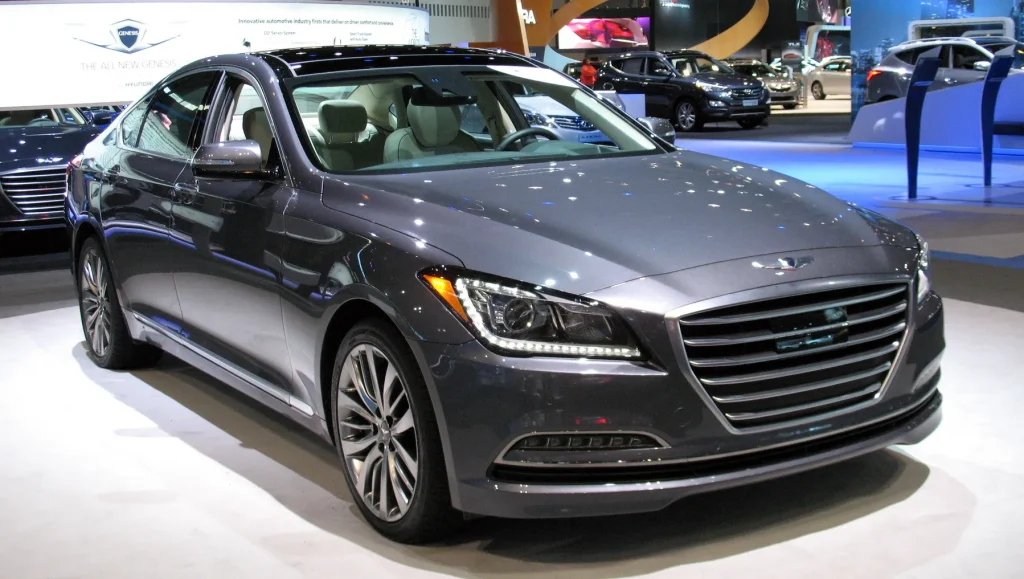
However, when it came to testing the Genesis’s newly available HTRAC all-wheel-drive system in harsh weather conditions, our surroundings weren’t as helpful.
There was no traction-reducing precipitation, particularly the frozen kind that dominated last winter. It seemed we were missing the polar vortex we so desperately needed. Like AWD? Hope You Like a V-6, Too
While we didn’t encounter significant traction problems during our test of the all-wheel-drive Genesis V-6, we did notice that Hyundai’s HTRAC system didn’t draw attention to itself.
This is in contrast to, for example, the Quattro system in our long-term Audi S7, which is more noticeable during tight parking-lot maneuvers. The HTRAC system, however, proved valuable by preventing wheelspin during hard launches.
HTRAC is exclusively available with the Genesis’s standard 3.8-liter V-6 engine, which produces 311 horsepower and 293 lb-ft of torque. (The optional 5.0-liter V-8 engine delivers 420 horsepower.) The car is equipped with an eight-speed automatic transmission that has a broad ratio spread, keeping the six-cylinder engine responsive.
We managed to accelerate to 60 mph in 6.2 seconds, with a top speed capped at 149 mph. While Hyundai’s in-house eight-speed automatic isn’t as seamless or intuitive as the ZF-sourced units found in many BMWs, it compensates for occasional missteps with its overall smoothness.

